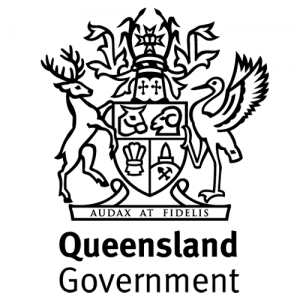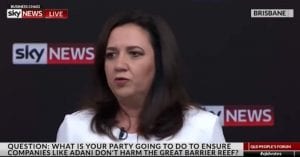Queensland might be one of the world leaders in rooftop solar uptake, but in terms of large-scale solar Australia’s Sunshine State has been late to the party.
The combination of policy uncertainty at the federal level, and an unsympathetic state Coalition government, has seen Queensland commission little in the way of large-scale renewables, apart from a few biomass plants based around sugar waste.
But a change of government later – the Coalition’s Campbell Newman lost Australia’s largest parliamentary majority in January to the ALP’s Annastacia Palaszczuk – Queensland looks set to start living up to its promise of being the Solar State, as well as the Sunshine State.
Certainly, industry watchers see huge potential: Bloomberg New Energy Finance has predicted Queensland could be the epicentre of large-scale solar in Australia, because of the excellent resource, the sprawling grid and demand growth.
And the Palaszczuk government appears to see it too. In May it confirmed its commitment to generate 50 per cent of its electricity needs from renewable energy by 2030, followed in August by a commitment to cut the state’s reliance on centralised coal power.
“The (Palaszczuk) government supports absolutely establishing a Queensland-based large-scale renewable energy industry,” the state’s newly minted energy minister Mark Bailey told a Senate estimates hearing in late August.
“We are working with renewable energy agencies to deliver a reverse auction for at least 40MW of renewable energy,” he said, adding that regional, government-owned Queensland utility, Ergon, had made an expression of interest for 150MW of state-based renewables capacity.
Soon after this statement, Queensland Labor increased the capacity of its own large-scale solar reverse auction from 40MW to 60MW.
But already in the state, large-scale projects are starting to roll in. There is the proposed 2GW Bulli Creek mega solar project in south-west Queensland – a SunEdison-Solar Choice joint venture that would be the largest in the world once fully developed.
Solar Choice obtained planning approval from Toowoomba Council for a staged deployment of up to 2GW over eight years. The first stage of the massive project could start construction in mid 2016, depending on negotiations for a power purchase agreement.
In north Queensland, meanwhile, Canberra-based renewables developer, Windlab, is proposing a 1,200MW wind and solar (600MW wind, 600MW solar PV) project, called the Kennedy Energy Park.
And south of Townsville, the Australian arm of Spanish renewable energy developer FRV has plans to build a 150MW grid-connected solar PV farm which would deliver up to 80 per cent of local electricity demand at rates cheaper than a new coal plant. Canadian Solar also has a 90MW project ready.
All up, there are more than 2.5GW of large-scale solar projects with local council approval, merely waiting for contracts with local utilities, or financing to enter the merchant market.
And there’s plenty of interest in the market. According to sources, Queensland proposals account for most of the interest in the current ARENA/CEFC renewables tender, mostly for fixed tilt solar PV projects.
There is also said to be an appetite for “merchant” projects, where the developer takes the pricing risk by selling into the wholesale market, also focused on states like Queensland, where the wholesale electricity prices, and solar resources, are higher.
The Solar60 program – the 60MW of capacity to be auctioned by the Queensland government – has also attracted strong interest because of the 20-year power purchase agreements on offer.
Ergon Energy, meanwhile, has also closed its offer of 150MW of large-scale renewables, and is sorting through the applications. It expects to whittle down a short list soon, with the intention of entering into contracts before the end of the year or in early 2016.
A spokesperson for Ergon Energy said the tender had sparked interest from a range of projects across regional Queensland, and the total megawatts proposed was “well in excess” of requirements.
There is no indication of technology yet, although the weight of analysis – from groups such as Bloomberg New Energy Finance to utilities such as Origin Energy – suggest solar makes the most sense.
On top of this, numerous proposals have been made for large-scale solar in Queensland, including from the proponents of a large-scale pumped hydro plant on an old gold mine.
The group behind the proposal, Genex Power, unveiled plans in October to build a 150MW solar PV plant at the old Kidston gold mine, adjacent to a proposed 330MW pumped hydro storage project.
If the proposal goes ahead, it will be the biggest solar plant (although it may face some competition from competing proposals), but certainly the largest combined solar and storage project in the Australia, and a world first on the latter metric.
Even Adani Group – the Indian coal giant best known in Australia for its controversial plans to mine the massive coal deposit in Queensland’s Galilee Basin – has expressed interest in developing big solar in the state; reportedly meeting with landowners in the Isaac Regional Council to gauge their interest in hosting a large-scale solar farm.
As Bailey himself has put it, “the demand for solar is very resilient.” For the Queensland government, he added “it is about facilitation, it is about getting blockages out of the way in terms of the industry.
“That is the way forward. The market is driving a fair bit of it. We are happy to work with the renewable industry sector and build positive relationships there which we have been doing over the last seven months.
“Now that the RET has finally landed and there is some certainty, albeit a fairly low target which is unfortunate, it at least has given the industry certainty in which to go out there and get projects going; a very good situation for Queensland to be in.”
This is part of a series of articles on Queensland sponsored by Norton Rose Fulbright. For the others in the series, please click here and also visit Norton Rose Fulbright’s COP21 coverage.









